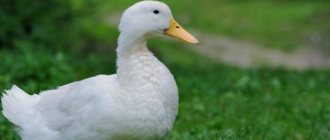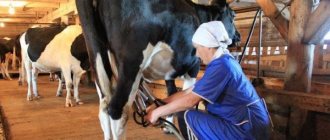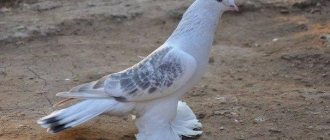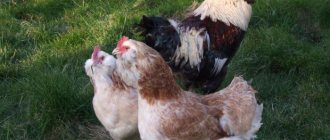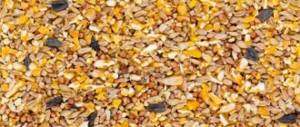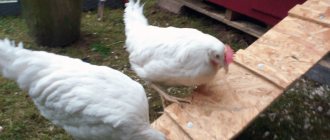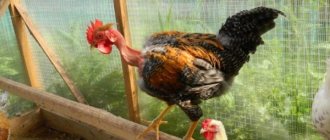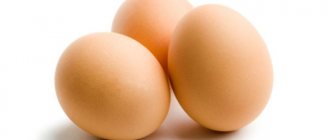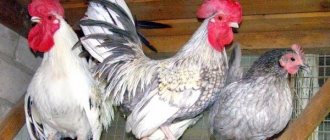Breeding pigeons is an interesting hobby. Purebred birds are quite expensive to purchase, but this does not stop amateurs. Tumbler pigeons especially attract a lot of attention. This is a special group of birds that can boast beautiful flight. It is quite possible that you have seen them many times already, but have not heard such a name. They are often called changelings or tumbling pigeons. In Europe they are known as rollers. Why are tumbler pigeons called tumbling pigeons? Because in the air they perform amazing tricks: they circle in the air and somersault through the wing.
Peculiarities
There is no reason to keep them alone. Only in a flock can birds hone their flying skills. By following them in the air, you can see how beautifully they freeze. They just stand still for some time, and then a rapid jump - and one of the birds rushes down. At this moment, only the movement of the pigeons’ wings can be noticed. After some time, one curls up into a ball and flies down sharply. Then this is repeated by another and a third. After which the birds continue their exercises. Not a single photo can convey the beauty of this flight. The pigeons do not stand still: the flock continues to fly, after which the trick is repeated again and again.
Regular training is very important for these breeds. This is the only way they can hone their flying skills. The correct selection of feed also plays an important role. Peas, wheat or corn are nutritious foods, but they are not suitable. The birds are getting too heavy. They need mostly barley and oatmeal.
Variety of species
The interest in these birds among amateurs and connoisseurs is so high that breeders have created dozens of breeds of roller birds. Tumbler pigeons are judged primarily on their skills. Many of them are high-flying, but this is not the main characteristic. The main thing is style and figure characteristics.
The appearance of the birds is rather inconspicuous, although some species are pleasing with long “pants” on their legs and crests. Compact bird with a small head. Most often they are short-beaked, but there are representatives with long beaks. Tumblers have well-developed chest muscles. The wings are long, the tail is wide. The cost of birds largely depends on the individual characteristics and skills of the individual. The difference can be significant. For example, a Kursk tumbler sells for 500 rubles, but individual specimens can cost 2,500 rubles.
Features of the view
Thurmans are a special breed of pigeons that are famous for their flying qualities. Such birds are capable of performing a flip and somersault in the air over their heads, one wing or tail. A purebred tumbler pigeon is capable of performing a huge number of somersaults in one flight. When such a bird is in the air, it resembles a wheel while moving. This spectacle is very impressive, and many breeders try to maintain the skill of their pets with constant training.
The second name for foreign tumblers is rollers. This variety of pigeons is very numerous both in appearance and in color, size, and manner of performing flight elements. In the following video you can watch these beautiful birds in the nursery, and also listen to information about some breeds directly from the breeder.
Origin
Charles Darwin roughly divided all types of pigeons into four groups. Turmans belong to a heterogeneous group, which in addition to them also includes peacocks, English gulls, Jacobins (or Indian) and English turbines. Based on this, the bird species itself was bred in many countries around the world; relict breeds were bred in Russia, Australia, and European countries starting from the 17th century.
For example, ribbon tumblers are considered an ancient Russian breed that appeared in the Russian city of Rzhev in the 17th century. Over the years, breeders from different countries have tried to improve the exterior of the birds, and now ribbon pigeons live almost throughout Russia and beyond.
Appearance
The most characteristic feature is its small body and small head. The eyes of these birds are dark, often with white eyelids. The neck is long, the forehead is high, and the beak is short. The tail is slightly raised, fluffed, and has 12 tail feathers. Thurmans can be either toothless or forelocked. The body can have a wide variety of colors. The legs are small and set quite wide. The average weight of such a pigeon is 800 grams.
Flight Features
The flight characteristics of tumblers of all breeds may differ, but it is typical for all to remain in the air for a long time and even somersaults and inversions. However, not every bird can perform this element. Typically, adults fly in a group, as if competing in skill. Then they sit down to rest and take off again.
Since these birds constantly fly, they are very hardy and strong. During one flying session, one individual can make from 3 to 5 flips. In the next video you can watch the beautiful flight of Kursk tumblers.
Flight
When domestic tumbler pigeons fly into the sky, it is not just a spectacle, but a whole show. They soar upward in a column. And then the smooth circling and acrobatic tricks begin. This performance looks especially good if there is a flock of birds in the air, rather than single birds. As already mentioned, they fly in groups. Therefore, experienced breeders always try to breed young birds with more experienced birds. A real competition begins in the sky, with each pigeon trying to show the others their best somersault. This is how their skills are honed and improved. Let's look at what types of tumblers are the most popular today.
Oryol white tumbler
The breed appeared in the 18th century. The color of the plumage is exclusively white. These are short-beaked birds with a small crest on the back of the head. Light feathers and a miniature build give these pigeons a special charm. Birds are quite difficult to breed. They are whimsical and need high-quality and balanced nutrition. But they are very good in flight. If you devote enough time to training, then your pets will be able to compete for the winners of competitions and exhibitions. Remember that the status and cost of the chicks will depend on this.
Tula tumbler
As you can see, the names of the breeds very often coincide with the cities where they were bred. Tula hot tumbler appeared 200 years ago and today is popular in its homeland. It has an interesting coloring: the body is dark red, and the wings and tail have white stripes. Particularly impressive in flight is the tail with a white ribbon, which blooms like a fan. The flight is beautiful, the bird rises in circles and soars at an average height. In order to maintain flight characteristics, they must be constantly released into the sky. Moreover, if we compare the Oryol and Tula tumblers, the latter have better characteristics, because the former began to be changed in the direction of improving decorative features.
LiveInternetLiveInternet
The hot ribbon tumbler belongs to the short-billed tumbler, but in our time, when short-beaked tumbler has been brought almost to the point of absurdity and birds cannot feed their offspring on their own, it is probably more correct to classify it as a medium-billed tumbler. This is still one of the few breeds that breeders have not reached. The bird has a solid dark red plumage; in the late 60s - early 70s, some old pigeon breeders could be heard describing this color as cherry. Due to the bright color of the plumage with a shiny greenish and lilac tint, apparently, the definition “hot” was added to the name of the breed. The ends of the flight feathers of its wing are decorated with white “mirrors”, and there is a white wide ribbon in the tail. Spread wings and spread tail look very impressive in flight. There is also a line with dark yellow plumage, they are called the yellow ribbon tumbler. The bird is practically no different from the hot ones, except for the color of the feather. The hot ribbon has been known since the fifteenth century, and since ancient times these pigeons have not undergone any great modification. This can only mean one thing - the breed is so good that there is no need to improve anything. The only criteria for selection were and are the quality of summer and the color of plumage. The color and shine of the feather are the main decoration of hot ribbon tumblers. The hot standard published in 1914 defined them as medium-sized pigeons with red-brown plumage and a golden-green tint. There is a rather wide white ribbon on the wings and tail. The body is oblong, the head is small, rather dry, with large white or silver eyes and white delicate eyelids. The beak is white, short, the neck is long, proportional to height, the legs are short, unfeathered. Hot ribbon pigeons should have a crest that is located below the back of the head and goes from ear to ear. Hot ribbon tumbler is easy to breed. Hot ribbon birds incubate and feed chicks very well; they can be used as feeders for short-billed birds. Hot dogs are so active and energetic that keeping them in the same dovecote with other breeds is a troublesome task. They can drive calmer and less pugnacious birds out of neighboring nests and injure other people's chicks. If you have several breeds of pigeons together in your dovecote, including hot ones, then be prepared for the fact that some of the chicks will look not like their “theoretical” father, but like their hot “neighbor.” The flight is easy and beautiful, the birds rise above the roof in even circles and stay at an average height.
Ribbon beauties
These birds are most common in central Russia. They owe their name to the transverse white stripe on the red background of the tail. Initially, these were Rzhev ribbon pigeons, more inconspicuous. Over the years, breeders have managed to give the birds modern forms. This breed is the most adaptable and viable of all. Despite this, the pigeon breeder will have to try very hard to ensure that his birds give birth to offspring, and even more so to preserve them. In most cases, the tape tumbler retains its flight capabilities. If you want to watch fantastic tricks, then choose these representatives of the species. And again I would like to note that a flock looks best, not a single individual.
Varieties
There are up to hundreds of subspecies in the Tumbler breed, each of which has a special exterior:
- short-billed,
- Bryansk,
- tape
Among the breed there are subspecies with a proud, elegant posture - these are Odessa Tumblers, which are considered a rare variety.
Regardless of the variety, birds have common characteristics. Among them, mobility, the ability to do tricks, and conquer considerable heights are noted.
Bryansk
The homeland of this subspecies is the Bryansk region. It was from here that tumblers spread throughout Russia and to the far corners of the world. A distinctive feature of Bryansk pigeons is their high growth. The birds have a large head with a medium-sized curved beak and a small crest.
The tail consists of sixteen feathers. The plumage is often white or speckled. The most valuable black color. Rarely, brown pigeons are found.
Kursk
This variety is often bred by beginning pigeon breeders. These tumblers have a calm disposition and are unpretentious. They easily get used to their owners.
Kursk pigeons are famous for their large size and brilliant plumage. Their limbs are short, without the characteristic “panties”. The main advantage is a wide, proudly protruded chest.
Odessa Turman
When choosing an unpretentious breed of pigeons, it is recommended to pay attention to Odessa tumblers. They are so easy to breed that even a beginner can handle them.
- Body size is medium, long body, dense back.
- The body is toned and dry.
- The plumage, despite the color, has a pearlescent tint.
Odessa cats are distinguished from other varieties by their claws - they are always white.
Oryol white
The Oryol type is valued among pigeon breeders more than others. Thurmans have:
- attractive exterior,
- proportional body build,
- short beak,
- presence of a tuft on the head.
Distinctive characteristics of appearance are large eyes and a long graceful neck.
White plumage is a prerequisite for a purebred Oryol pigeon. If brown or black feathers are found among the feathers, this is considered a serious defect. Such birds are not used for breeding.
Bessarabian Old Cossacks
The subspecies received its name thanks to the Cossacks. It was they who brought this variety from Bessarabia hundreds of years ago. This subspecies is rarely found in the collections of foreign pigeon breeders.
Bessarabian pigeons are not large, they have a wide tail and a concave back. Birds have neither a crest nor “pants” on their limbs.
If you carefully study the photos of Bessarabians, you can see one feature. The wings of this variety are drooping downwards.
Bessarabians are also considered excellent flyers. Not only can they fly for a long time, but they can also perform a number of tricks.
Tape
This variety gets its name from the wide stripe on its tail. The plumage of the subspecies is red, plus a brown tint. There are also pigeons with snow-white wings; this is not considered a defect and is allowed by breed standards.
The photo of ribbon pigeons shows that the variety is not large in size. The torso is medium, fit. The head is medium, with a thick short beak.
Moscow tumblers
Characteristic features of the breed are a small elongated body and varied plumage. Dark red with a purple tint, gray or piebald. Their body is small, compact, and their head is cubic in shape. Large dark or white eyes, short and blunt beak. The neck and wings are long, the tail is slightly raised and consists of 12 feathers. The limbs are short and unfeathered. During the Great Patriotic War, the line practically disappeared; rare specimens were preserved only by some fanciers of the breed. The gray tumblers were later restored.
Neck: long, curved.
Shields: none.
Belts: none.
Limbs: short.
Tail: medium length.
Flight performance: high.
Flight: Quite beautiful. They fly quite high, in huge circles, sometimes even disappearing from visibility. Many representatives of this breed are good katuns.
Tula hot
Tula Hot Turmans (Fig. 22) are one of the first breeds of short-billed tumblers. The fried ones belong to the Lobach breed. These pigeons are called hot pigeons for their peculiar red-brown plumage with a golden-green tint.
Rice. 22. Tula hot
Origin of the breed
According to some surviving sources, this breed was bred 4 centuries ago, and possibly even earlier. It is known that already in the 17th century. Tula hot dogs were used to form the Rzhev ribbon pigeon breed.
In the process of forming the breed, Tula hot tumblers were instilled with such qualities as increased vitality, high fertility, good ability to incubate and feed chicks and undemanding conditions for keeping and feeding.
Tula hot tumblers are bred only in some cities: Moscow, Kaluga, Tula, etc. Currently, they are not as popular as they used to be. They are mainly bred to later be used for crossing with pigeons of other breeds. This is done to renew the blood of colored tumblers.
The breed standard for the Tula Hot Tumbler was adopted in 1914. Since then it has never been changed.
Breed standard
Body: medium size, oblong, body length – 35–37 cm.
Plumage: red-brown with a golden-green tint (hot).
Head: small, dry.
Eyes: large, silvery.
Eyelids: white.
Beak: small, short.
Wings: long, tightly pressed to the body, at their ends there is a not very pronounced ribbon (visible when the wing is deployed).
Neck: long, proportional.
Shields: correspond to the main plumage.
Belts: none.
Limbs: short, bare.
Tail: consists of 12 feathers, slightly loose, with a wide white ribbon (2–2.5 cm) on it.
Flight performance: average.
Flight: has no characteristic features.
Tula monks
This breed was formed later than the other short-billed tumblers. In this regard, the official standard for Tula monks has not yet been adopted. Due to their high flying qualities, these birds can also be classified as racing pigeons.
Origin of the breed
This breed of pigeons was bred in the mid-19th century. in Tula. There, the Tula monks were known as the “Tula Ribbon Monks.” Later, they began to be called “Tula monks” for the classic colored cap on their heads.
In Tula, a large collection of pigeons of this breed belonged to pigeon breeder D.V. Zhuravlev. Thanks to the beauty of the plumage and unusual pattern, Tula monks began to be bred in other cities of Russia.
Breed standard
Body: slightly elongated, but less than average, body length – 32–34 cm.
Plumage: white, on the head (from the back of the head to the wax) there is a red stripe, while the eyebrows are white, the tail is also red with a white transverse ribbon.
Head: rounded. The forelock is located below the back of the head from ear to ear.
Eyes: dark color.
Eyelids: white.
Beak: medium thickness, short, white with white wax.
Wings: medium length, ends located on the tail.
Shields: match the color of the main plumage.
Belts: none.
Limbs: short, without feathers, red with white claws.
Tail: consists of 12 feathers, flat, slightly flowing.
Flight performance: high.
Flight: swift. They fly in inclined circles that depend on the strength of the wind.
Black and piebald tumblers
Black and piebald tumblers (Fig. 23) are very popular in many cities of Central Russia. Their standard was officially adopted in 1912.
Rice. 23. Black-and-white tumbler
Origin of the breed
There is very little accurate information about the origin of the breed. Presumably, black and piebald tumblers were bred at the beginning of the 19th century. by crossing Oryol Whites with Oryol Boreduns. The best collections of black and piebald tumblers belonged to pigeon breeders of Kaluga. Because of this, pigeons of this breed were often called Kaluga.
In 1890, the breed was officially recognized, and black and piebald pigeons began to be shown at exhibitions of the pigeon breeding department of the Russian Acclimatization Society. At the 1904 exhibition, black and piebald tumblers with forelocks were presented for the first time.
At the beginning of the twentieth century. The best collections of black and piebald tumblers belonged to Moscow pigeon breeders: V. L. Zimin, V. A. Zimin, I. N. Kirillov, V. G. Zaitsev, Kh. S. Erzin, and others.
In 1910, a large exhibition of pigeons took place, at which V. L. Zimin’s black and piebald tumblers received the Big Gold Medal.
During the Civil War, most of the pigeons of this breed were destroyed. In the 20s XX century Experienced pigeon breeders restored the breed, after which the birds again began to participate in various competitions and pigeon exhibitions.
In 1928, a pigeon competition was held, the winners of which were pigeon breeders A. I. Tarasov, M. G. Belov, K. Ya. Malyugin, A. Ya. Lisitsyn.
During the Great Patriotic War, collections of black and piebald tumblers were owned by I. P. Usakov, D. A. Alekseev, K. V. Zivenko, E. D. Fain, K. Ya. Malyugin, I. K. Volodin, K. S. Kleshcheva, A. K. Egorova. Subsequently, the collection of I. P. Usakov passed to the brothers Bogdanov and E. I. Shchedrov, and the collection of E. D. Fain - to L. P. Shibanov. In the 60s XX century these collections were considered the best in Russia.
In the middle of the 20th century. Most pigeon breeders in Russia kept black and piebald tumblers in aviaries as decorative pigeons. As a result of this, the birds became more pampered and weaker, and many became unviable.
Aviary birds
You need to know that all tumblers require attention and careful care. It is best if the bird lives at home and constantly hones its flying skills. If you do not deal with them, then all natural characteristics will gradually be lost. The black and piebald tumbler first appeared at exhibitions and competitions in 1980. The magpie's plumage pattern did not go unnoticed. The first standard was approved later, at the end of 1912. But today pigeon breeders are somewhat spoiled by the abundance of species, and many excellent representatives of black and piebald tumblers have been transferred to aviary keeping. As a result, pigeons have practically forgotten how to perform tricks. Masterly acrobatic flight is exactly what they are designed for.
Originally from Ukraine
The Odessa breed is a very old breed, to which pigeon breeders lost interest for a certain period. As a result, there are fewer and fewer individuals capable of reproduction. The thing is that most of the breeders turned out to be illiterate. Targeting other popular breeds, they began to eradicate the natural ability of these birds to fly in a peculiar way. Of course, the breed suffered greatly from this. Today the situation is improving a little. Breeders again began to revive the flying qualities of the Odessans. Their photos began to appear in many magazines. The dove is of medium size, the body is cone-shaped, the head is flattened, like a snake. The birds have a proud posture and long wings. Feet are bare and dry. Their plumage may be different. Flight performance largely depends on the quality of training, so you should not rely on a good pedigree. If you do not organize daily competitions, in which several birds must participate, then tumblers may completely lose their qualities. If you are interested in these birds, then contact trusted breeders to purchase birds with good characteristics with which you can further work.
History of the development of fawn and coffee pigeons
One of the later breeds of short-billed Russian tumblers was bred by pigeon breeders in the city of Tula, where it is most widespread. In today's literature there is no history of the origin of this breed, but if we more carefully analyze the history of the origin of not only the Tula beetle, but also many of our domestic short-billed tumblers, we can come to a definite conclusion that the ancestors of the beetles can be considered, firstly, the Smolensk crested beetle, the Tula hot one , Lviv short-billed tumblers and Bessarabian (Chisinau) two-foreheads.
Most of the Tula beetles at the beginning of the twentieth century were similar to the Tula hot beetles. They have almost identical figures, heads, beaks and even flight styles. In a flock where hot beetles and beetles flew together, when flying high it was impossible to distinguish them. At the dawn of the Tula beetle breed, they were kept mainly for flight, and their decorative qualities were not given much importance. Beetle lovers of those years called this breed Tula ticks and spoke of them as “completely simple representatives of local breeds,” as N.A. mentions in his book. Vasiliev.
But time passed, and beetles began to be divided into flying and decorative ones. In the end, Tula pigeon breeders began to give preference to the latter. Today, pigeons are considered valuable in this breed if, with a small body size, the length from the chest to the end of the tail is no more than 26 cm, the legs are low, the figure is beautiful, with a small faceted head, with a crest below the back of the head from ear to ear, with large pearl eyes, white forked eyelids and a short white beak, the landing of which copies the landing of the Bessarabian monocheek.
The number of Tula beetles of exhibition condition decreased from time to time, then quickly recovered again, and there were several reasons for this. Firstly, this is war, secondly, the breed has become pampered, when breeding them, “feeders” are needed, and thirdly, improved living conditions are needed.
In Moscow, starting from the 50s of the last century, N.V. began breeding beetles. Kuznetsov, who worked with this breed for 20 years and achieved some success. As a result, in 1975, at the Moscow exhibition, he demonstrated five pairs of excellent birds, which aroused a certain interest in this breed among other Tumbler lovers, such as Yu.S. Blistanov, and subsequently M.D. started breeding these pigeons. Yakshinsky, V.I. Korobkov, V.V. Glazov, I.Yu. Kryuchkov, as evidenced by the Moscow exhibitions of the last decade of the twentieth century.
Today, in the mid-1990s! centuries, some pigeon breeders in our country have been breeding Tula beetles and colored short-billed tumblers, including the famous pigeon breeder from Voronezh G.M. Yankubinsky. Nowadays, yellow and coffee-colored pigeons are not uncommon in the market and at exhibitions. They are called Tula short-billed yellow and coffee.

